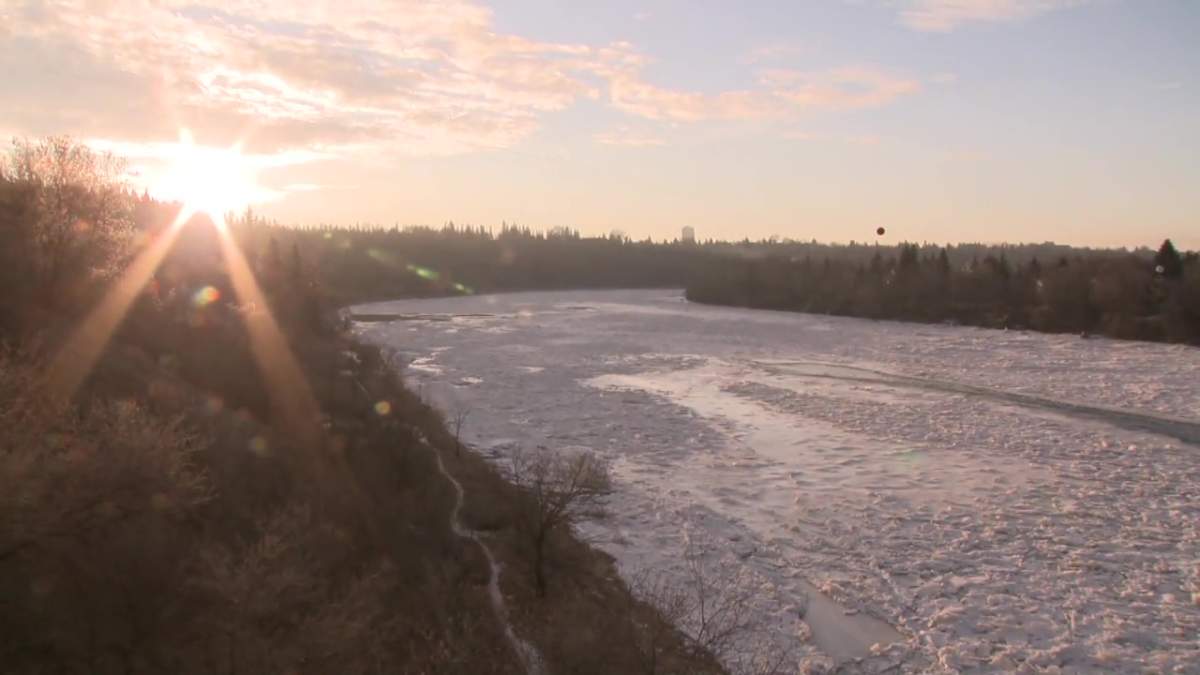The entire section of the North Saskatchewan River that flows through Alberta is now officially a “Canadian Heritage River.”

A 49-kilometre stretch of the river that runs through Banff National Park is already designated.
On Friday, the remaining 718 kilometres that flow through the province, including Edmonton’s river valley, were also recognized under the Canadian Heritage Rivers System.
“Edmonton provides an incredible combination of urban lifestyle with a verdant river valley and park system – the largest urban greenspace in North America – through the heart of the city,” said Traci Bednard, president and CEO of Explore Edmonton.
This section of the river was nominated in 2022 by Smoky Lake County.
“This designation will ensure greater awareness and collaboration among various jurisdictions and river-users to foster sustainable tourism, business and recreation opportunities through the recognition and celebration of the outstanding cultural values of this iconic river,” Reeve Jered Serben said.

“This waterway has been instrumental in the development of Canada over the last centuries as a main transportation and trade route and as an extremely important cultural and historic site to the many Indigenous nations in the area,” said federal environment minister Steven Guilbeault.

Get daily National news
The North Saskatchewan connects the Rocky Mountains to the prairies, before meeting with its sister, the South Saskatchewan River, and eventually flowing into Hudson Bay. The river’s route covers four of Alberta’s six natural regions: Rocky Mountains, Foothills, Boreal Forest and Parkland.
“The North Saskatchewan River has always been an integral part of our heritage since time immemorial and continues to embody Treaty 6,” said Nôhkom Jo-Ann Saddleback, an Elder with the Saddle Lake Cree First Nation. “At Fort Pitt, when Commissioner Morris indicated ‘as long as yonder river flows,’ he was pointing to this river, kisiskâciwanisîpiy. Designation as a Heritage River will serve to encourage respect and stewardship of this landscape and grow relations among river communities.”

Alberta Senator Paula Simons said a lot has changed since she was growing up in Edmonton. In the 1970s, she said parents warned their kids to stay away from the river.
“But over the last decade, there’s been a huge cultural shift, as people rediscovered the river as a place for swimming, paddling, floating, and boating,” Simons said. “The challenge now is to make the river accessible for recreation and tourism, while still protecting it as a riparian ecosystem, a wildlife corridor, and a source of safe drinking water.”
The Canadian Heritage Rivers System is a collaboration between the federal, provincial and territorial governments.
There are currently 41 rivers or river segments designated under the Canadian Heritage Rivers System, covering more than 10,000 kilometres across the country.
The North Saskatchewan is the second river in Alberta outside a national park to be recognized under the program. The Clearwater/Christina rivers near Fort McMurray were designated in 2003.



Comments